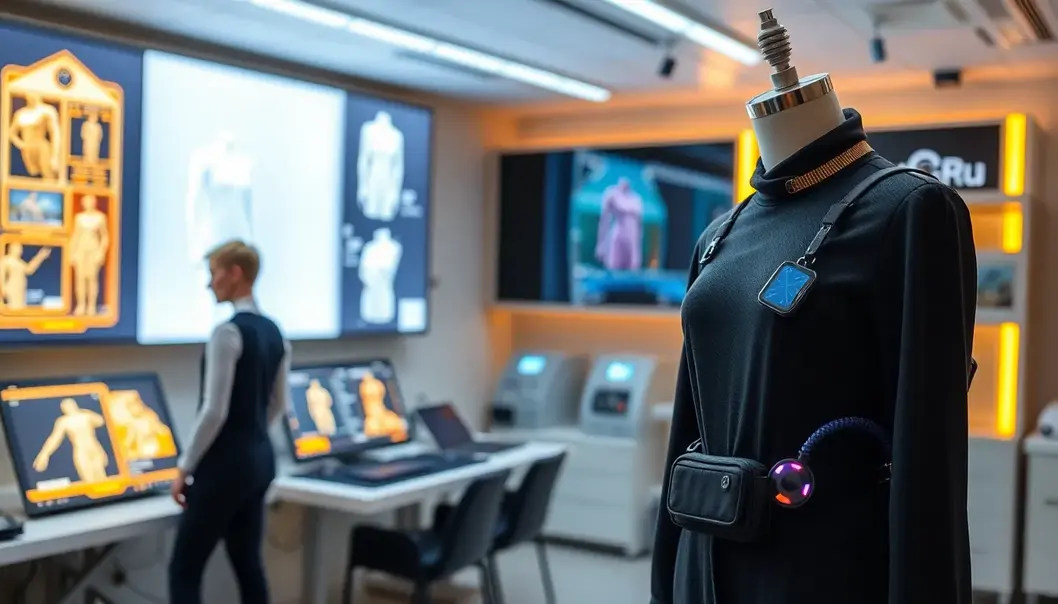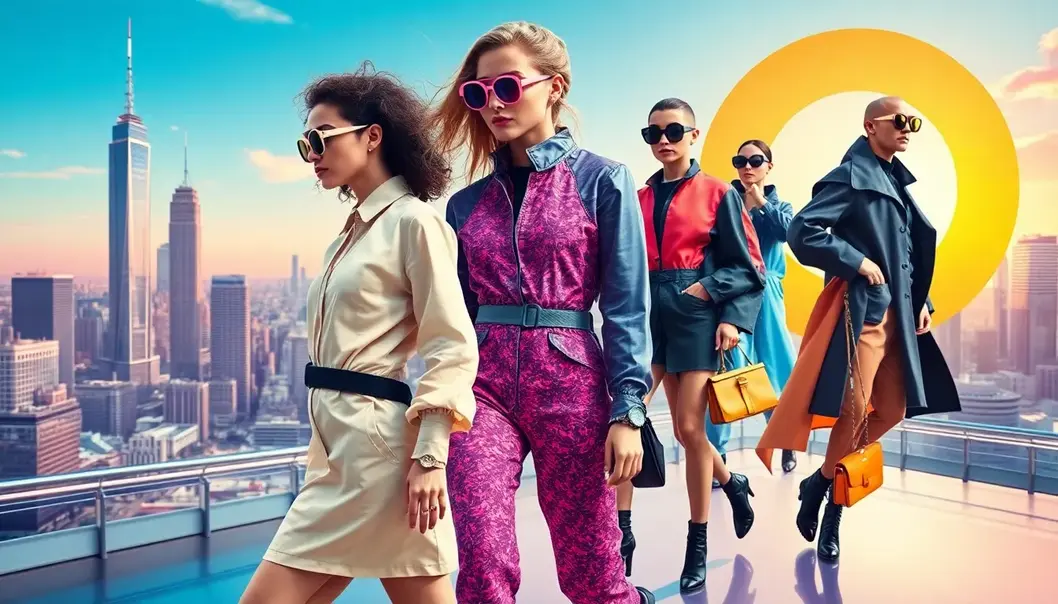Brace yourselves as we usher in 2025, a year poised to redefine fashion with bold creativity and futuristic insights. For trend analysts and fashion enthusiasts, 2025 promises to be a year where technology and sustainability take center stage, weaving together threads of innovation in an ever-evolving fashion landscape. The future is poised to celebrate individuality through daring designs and pioneering textiles, creating an environment where imagination reigns supreme. Dive into the shifting sands of fashion that will not only accentuate individuality but also replace fast fashion with mindful choices.
Technology Meets Textile: The Fusion of Innovation and Fashion

The fashion industry in 2025 is witnessing an unprecedented blend of technology and creativity, reshaping how we design, produce, and experience clothing. At the heart of this transformation are smart fabrics, 3D printing, and wearable technology, all playing pivotal roles in defining the future of fashion. The integration of these advancements is not just a fleeting trend; it represents a fundamental shift in the way fashion interacts with the modern consumer.
Smart fabrics are arguably the most groundbreaking of these innovations, opening new avenues for functionality and personalization. These textiles are embedded with microscopic sensors and conductive threads that can monitor and react to various stimuli, such as body temperature or environmental conditions. This capability allows garments to adapt throughout the day, providing unparalleled comfort and versatility. Designers are leveraging these fabrics to create clothing that not only fits aesthetically but also enriches the wearer’s lifestyle. Imagine a jacket that adjusts its thermal insulation based on the outside temperature or a dress that changes color in response to the wearer’s mood—these are not mere science fiction but present realities.
3D printing has emerged as a game-changer in fashion design, promising sustainability and customization without the constraints of traditional manufacturing. This technological marvel allows designers to create complex patterns and structures that were once impossible by traditional means. 3D-printed garments can be tailored to individual specifications, pushing the boundaries of bespoke fashion. The reduction in fabric waste is another significant advantage, aligning with the growing demand for sustainable practices within the industry. This transformative approach empowers designers to innovate fearlessly, producing unique creations that defy conventional aesthetics.
Wearable technology is merging seamlessly with high fashion, creating a new genre of style that prioritizes both form and function. Gadgets embedded within clothing or accessories can track health metrics, facilitate communication, or even carry out transactions. The advent of such technology enhances daily life, making fashion not only a statement of individual style but also an integral component of personal productivity and well-being. As these wearables become more sophisticated, they are designed to be indistinguishable from traditional garments, ensuring that technology serves its purpose discreetly and efficiently.
These advancements collectively influence the fashion production lifecycle, streamlining processes while enhancing creativity. Automated production using high-tech techniques reduces human error, accelerates manufacturing times, and minimizes resource use—key factors contributing to both economic and environmental benefits. Designers have unprecedented freedom to experiment, unburdened by the logistical limitations of the past.
The consumer experience, too, is undergoing a profound transformation. Shoppers now expect interactive experiences where they can personalize products in real-time, aided by augmented reality interfaces and virtual fitting rooms. This heightened level of interaction fosters a deeper connection between brand and consumer, cultivating loyalty and satisfaction. Consumers are no longer passive buyers; they become co-creators in the fashion journey.
As we delve further into this era of fashion-tech symbiosis, the main challenge will be striking a balance between embracing innovation and preserving the essence of personal style. The future of fashion is indeed breathtaking, promising a blend of aesthetic splendor and cutting-edge technology that we are only beginning to explore.
Sustainability and Style: Redefining Aesthetic Values

The fashion industry of 2025 embraces sustainability as a non-negotiable foundation, weaving eco-friendly principles into every fiber of style. As designers strive to marry the allure of cutting-edge aesthetics with environmental responsibility, the boundaries between ethical stewardship and high fashion blur, creating a landscape where both coexist harmoniously.
Eco-friendly materials are at the forefront of this revolution, with innovations in textiles leading the charge. Organic fibers, biodegradable synthetics, and upcycled materials offer designers a palette that doesn’t sacrifice creativity for conscientiousness. These materials not only reduce the environmental impact but also allow for garments that speak to a more mindful audience. The emphasis on durability and recyclability ensures clothes that are designed to last beyond seasonal trends, fostering a culture of timeless elegance.
In the realm of ethical production, transparency has become the norm rather than the exception. Fashion houses are reevaluating their supply chains, prioritizing fair labor practices and local artisanship. This shift enhances the stories behind the clothes, enriching them with a narrative of care and community support. More brands are adopting closed-loop systems, where garment life cycles are planned in a way that minimizes waste and maximizes resource efficiency.
Globally, these practices have a profound impact on fashion trends, transforming the very essence of style. The allure of sustainable fashion attracts a diverse clientele, from eco-conscious millennials to luxury consumers seeking pieces that reflect their values. The geographical scope of these shifts is considerable, with regions such as Scandinavia and Japan leading innovation, thereby influencing global taste and demanding other fashion capitals to follow suit.
The shift in aesthetic values is not just about what is worn but how it aligns with personal ideologies, encouraging individuals to consider the broader implications of their wardrobe choices. This results in an industry that honors and celebrates diversity, making strides towards inclusive fashion where sustainability is not just a trend but an integral fabric of its identity. As sustainability reshapes the fashion narrative, it intertwines with themes explored in previous chapters, such as technology’s role in fabricating innovative materials without compromising ethics, reinforcing a holistic approach to future fashion evolution.
Final words
As 2025 approaches, fashion enthusiasts are set to embrace the future with technology and sustainability at the helm. The merging of smart textiles and eco-friendly practices promises a renaissance of creativity that champions individuality and environmental responsibility. This new era in fashion will undoubtedly inspire a generational shift in style and substance.
Embrace the fashion of tomorrow. Discover the full potential of 2025’s trends with our expert insights.
Learn more: https://fashiontrends2025.com
About us
Fashion Trends 2025 provides exclusive insights and predictions for the upcoming year’s fashion industry, helping designers, retailers, and fashion enthusiasts stay ahead of the curve.



